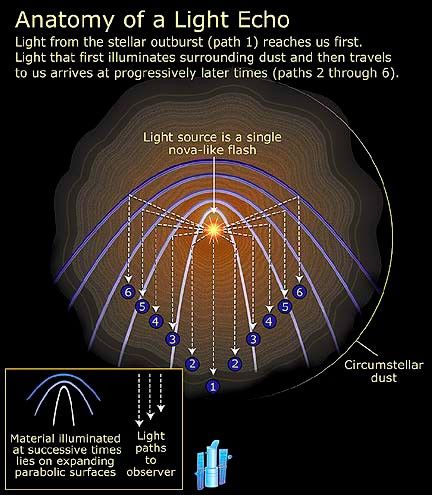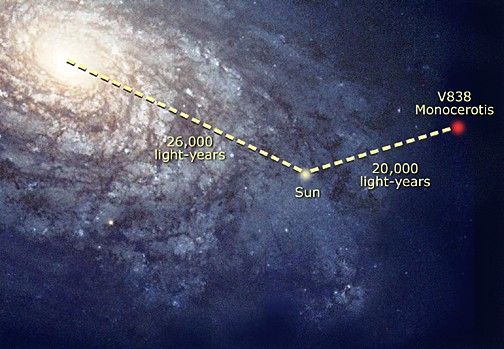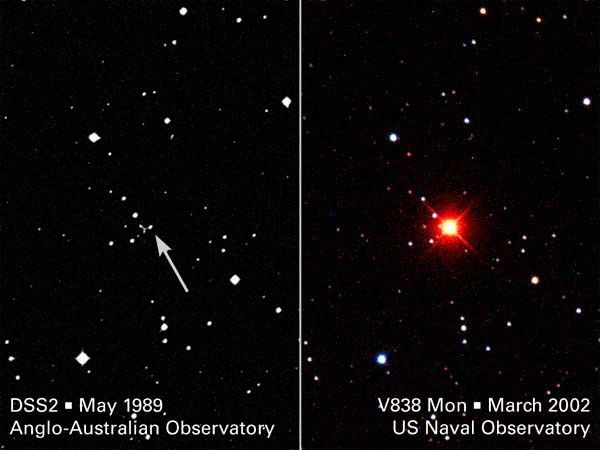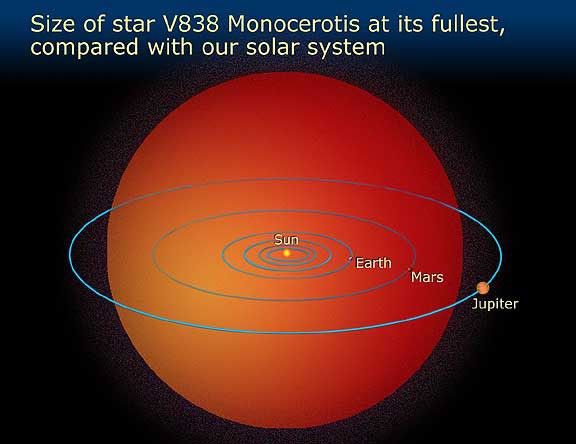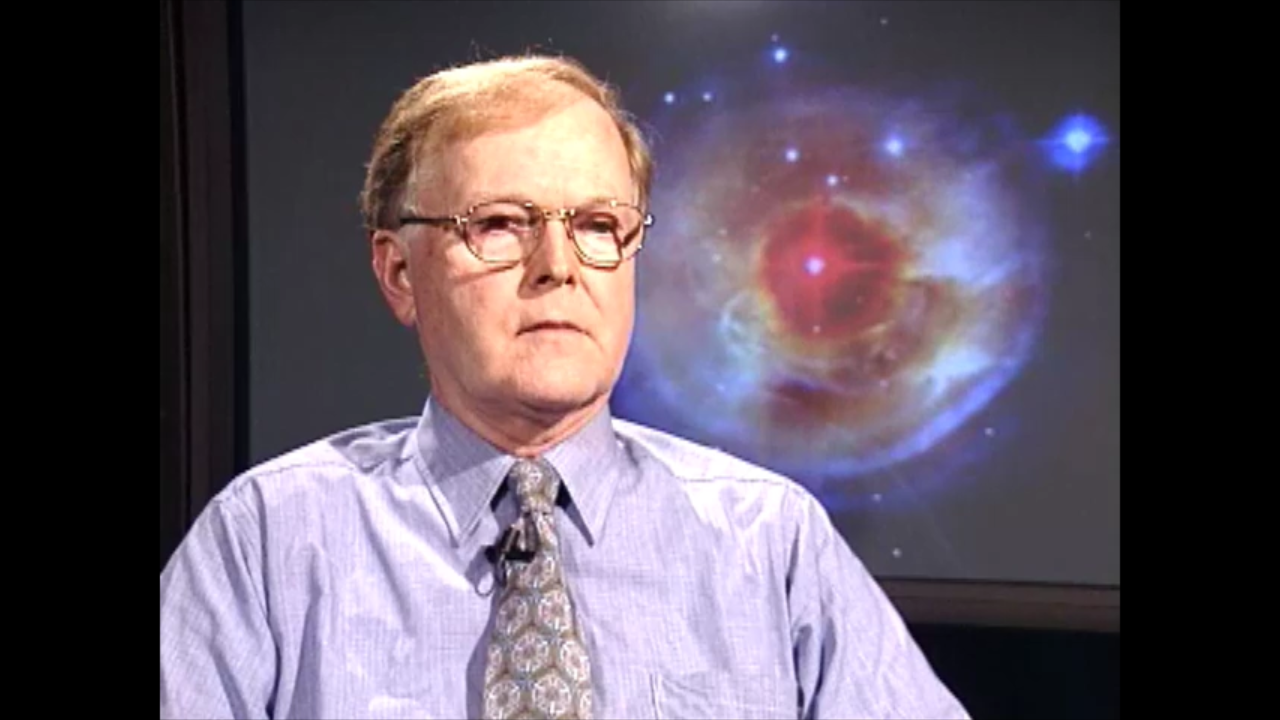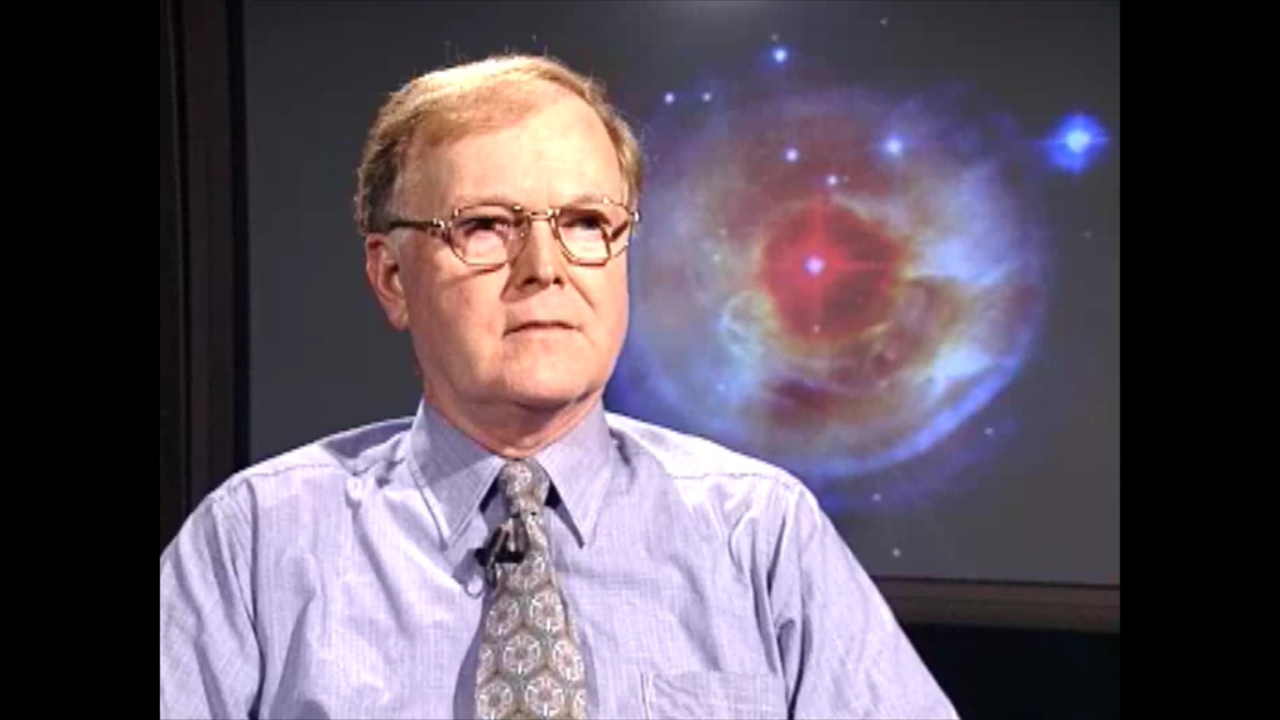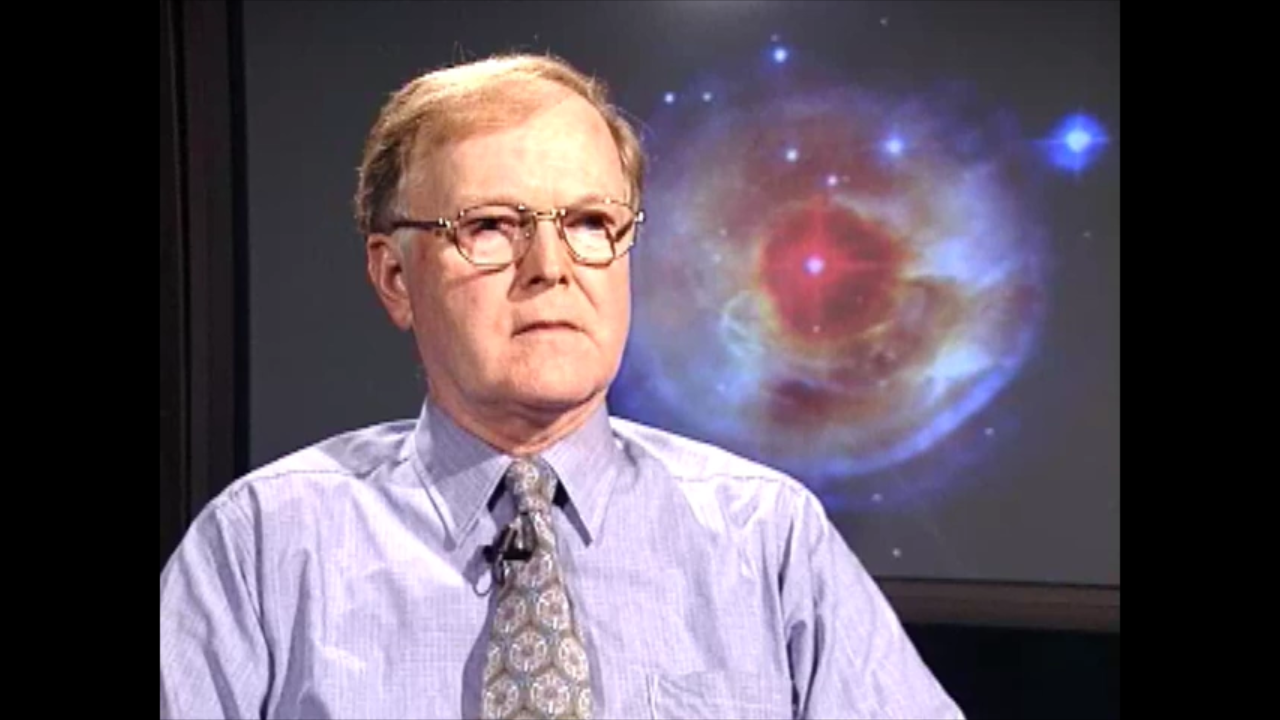1 min read
Light Echo From Star V838 Monocerotis – April 30, 2002

About the Object
- R.A. PositionR.A. PositionRight ascension – analogous to longitude – is one component of an object's position.07h 04m 05s
- Dec. PositionDec. PositionDeclination – analogous to latitude – is one component of an object's position.–03° 50' 50"
- ConstellationConstellationOne of 88 recognized regions of the celestial sphere in which the object appears.Monoceros
- DistanceDistanceThe physical distance from Earth to the astronomical object. Distances within our solar system are usually measured in Astronomical Units (AU). Distances between stars are usually measured in light-years. Interstellar distances can also be measured in parsecs.The star is ~20,000 light-years (~6 kiloparsecs) away.
About the Data
- Exposure DatesExposure DatesThe date(s) that the telescope made its observations and the total exposure time.April 30, 2002
- Object NameObject NameA name or catalog number that astronomers use to identify an astronomical object.V838 Monocerotis, V838 Mon
- Object DescriptionObject DescriptionThe type of astronomical object.Nova-like object, Light Echo
- Release DateMarch 26, 2003
- Science ReleaseHubble Watches Light from Mysterious Erupting Star Reverberate Through Space
- Credit
Related Images & Videos
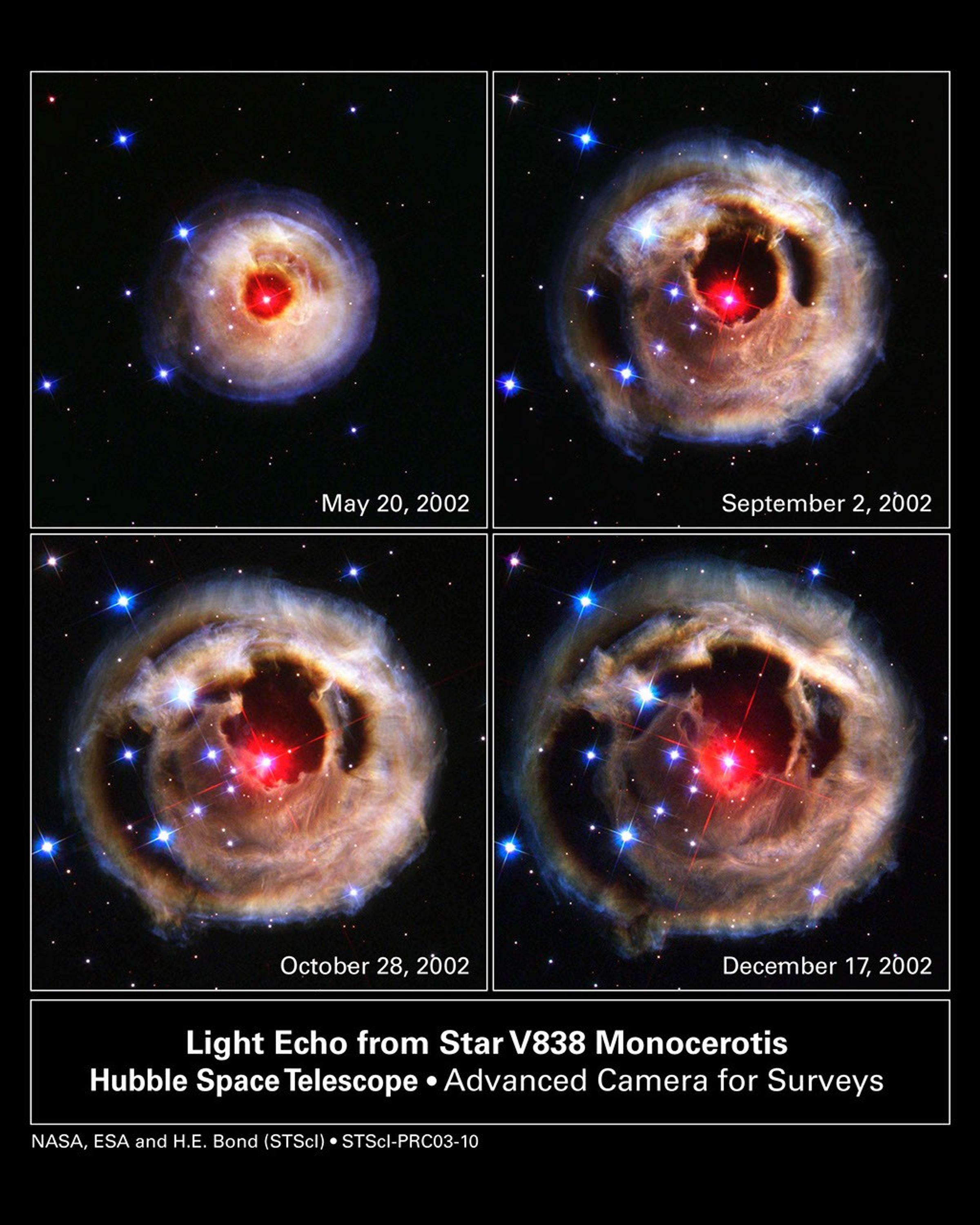
Light Echo from Star V838 Monocerotis
This sequence of pictures from the NASA Hubble Space Telescope's Advanced Camera for Surveys dramatically demonstrates the reverberation of light through space caused by an unusual stellar outburst in January 2002. A burst of light from the bizarre star is spreading into space...
Share
Details
Last Updated
Aug 17, 2025
Contact
Media
Claire Andreoli
NASA’s Goddard Space Flight Center
Greenbelt, Maryland
claire.andreoli@nasa.gov





























